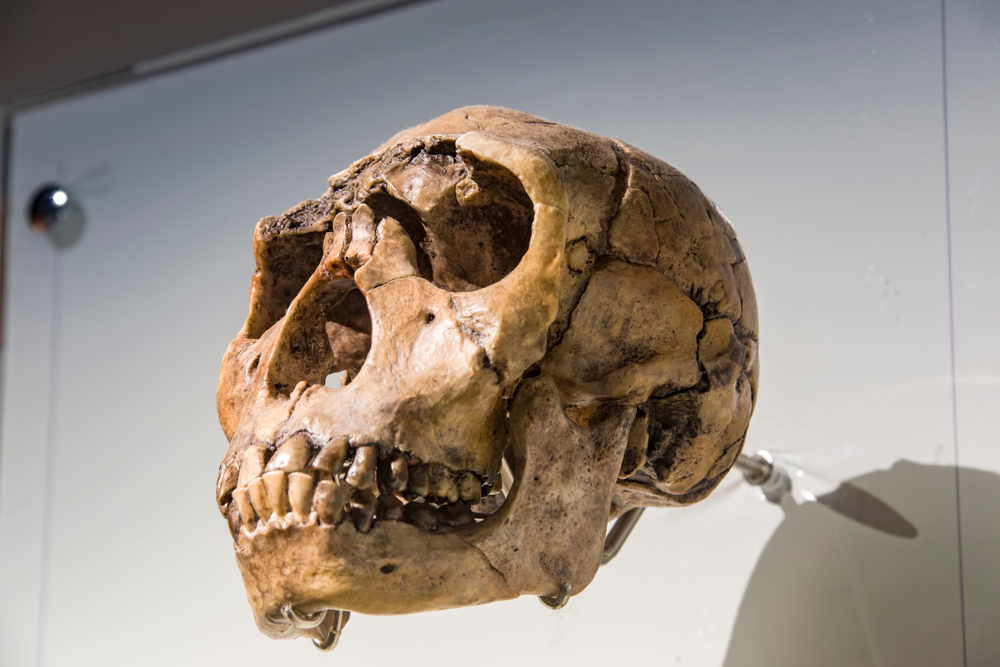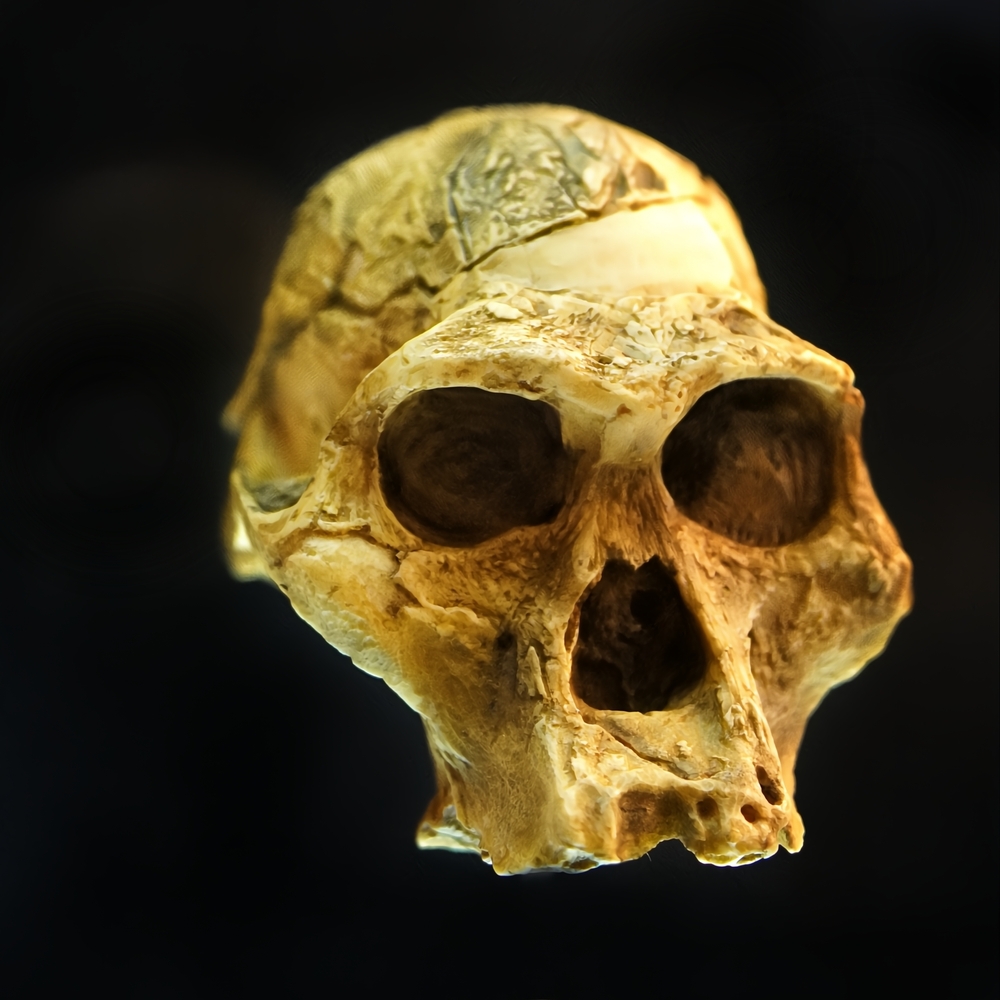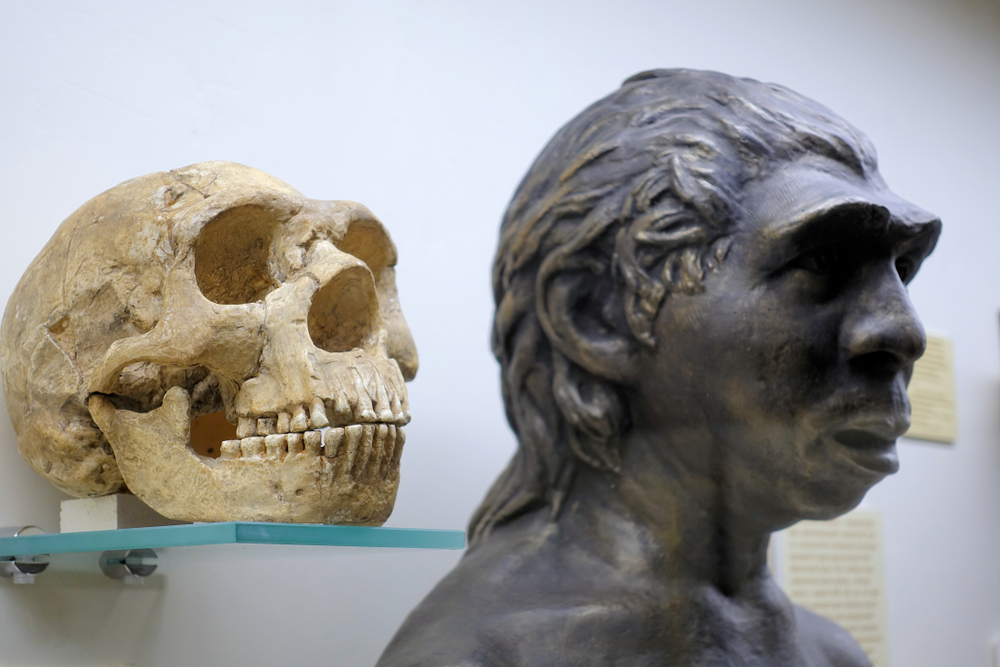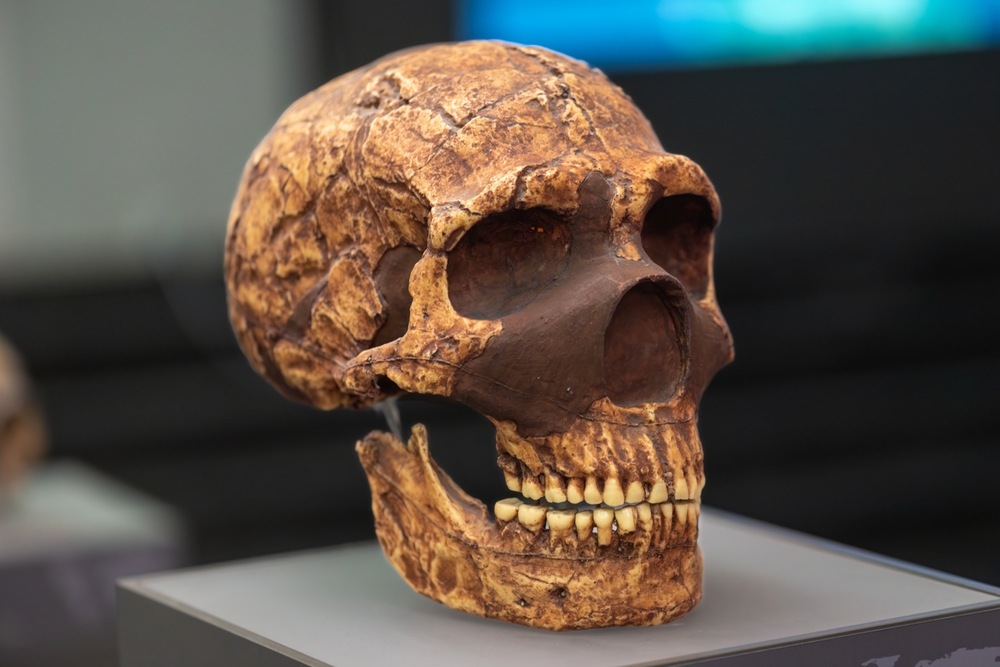Million-Year-Old Skull Could Rewrite Entire Timeline of Human Evolution According to Researchers

Scientists opened storage boxes containing a fossil that had sat in museum collections for over thirty years. Advanced technology finally allowed them to see what naked eyes missed for decades. What they discovered threatened to collapse fundamental assumptions about where humans came from and when our species truly began.
Crushed beyond recognition by a million years of geological pressure, one skull fragment held secrets that would double the accepted timeline of human origins. Research teams applied digital reconstruction techniques that didn’t exist when the fossil was first discovered in 1990. Results challenged everything textbooks taught about human evolution.
Geography, timeline, and ancestry all face revision based on findings published in Science journal. Leading anthropologists struggle to reconcile new evidence with established theories built over generations. One badly deformed skull might force complete rethinking of humanity’s deepest roots.
One Crushed Skull Just Shattered Everything We Knew About Human Origins

Yunxian 2 skull emerged from Hubei province in China during 1990 excavations near the Hanjiang River. Fossil hunters discovered the specimen badly deformed, crushed under immense geological forces over approximately one million years. Initial examination classified the skull as belonging to Homo erectus based on age estimates and observable physical characteristics.
Classification seemed straightforward given available technology and scientific understanding at that time. Large brain case, prominent brow ridges, and jutting jaw matched expectations for primitive human species that populated Asia during the Middle Pleistocene period. Museums catalogued the skull and moved forward with existing evolutionary models.
Three decades passed before researchers reconsidered Yunxian 2 using sophisticated reconstruction technology developed in recent years. Advanced CT imaging, high-resolution surface scanning, and digital analysis techniques revealed details impossible to detect through traditional examination methods. Virtual reconstruction removed distortions caused by crushing and geological compression.
Results shocked research teams who expected confirmation of original Homo erectus classification. Skull belonged to entirely different species with profound implications for understanding human evolutionary history.
Dragon Man Species Emerges from Scientific Reconstruction
Digital reconstruction revealed Yunxian 2 belonged to Homo longi, commonly called dragon man, rather than Homo erectus as previously believed. Species identification came from analyzing overall skull shape, brain case dimensions, and dental characteristics that distinguished it from other known human groups.
Homo longi shows close genetic relationships to Denisovans, mysterious human relatives known primarily through fragmentary remains and ancient DNA analysis. Connection between dragon man fossils and Denisovan genetic evidence helps scientists understand these elusive populations that lived alongside modern human ancestors.
Research team applied sophisticated computational analysis mapping 533 landmarks and semilandmarks across reconstructed skull surfaces. Geometric morphometric techniques compared Yunxian 2 against 26 complete hominin fossils and 153 recent human specimens. Statistical clustering placed the skull definitively within Homo longi groupings rather than Homo erectus populations.
Mosaic features displayed both primitive characteristics inherited from earlier hominins and derived traits shared with more recent human species. Skull retained thick brow ridges, broad facial structure, and low cranial vault typical of ancient humans while developing specialized features linking it to modern human lineages.
Human Family Tree Split 400,000 Years Earlier Than We Thought

Previous scientific estimates placed the split between Neanderthals and modern humans at approximately 500,000 to 700,000 years ago based on fossil evidence and genetic comparisons. Yunxian 2 discovery pushes divergence timing back dramatically to at least 1 million years before present.
Professor Chris Stringer, anthropologist and research leader in human evolution at London’s Natural History Museum, explained the magnitude of this revision: “This changes a lot of thinking because it suggests that by 1 million years ago our ancestors had already split into distinct groups, pointing to a much earlier and more complex human evolutionary split than previously believed. It more or less doubles the time of origin of Homo sapiens.”
Bayesian tip-dating analysis revealed that diversification of Homo and origin of Homo sapiens reach much deeper in time than conventional models suggested. Origin of the longi clade dates to approximately 1.2 million years ago, slightly older than Yunxian fossils themselves. Origin of sapiens clade estimates at about 1.02 million years ago, also close to Yunxian specimen age.
Divergence between longi clade and sapiens clade occurred around 1.32 million years ago according to computational modeling. Monophyletic Neanderthal clade, widely considered sister group to Homo sapiens, diverged from longi and sapiens clades at approximately 1.38 million years ago.
Africa Might Not Be Where Humans Actually Began
Traditional “Out of Africa” theory dominated human evolution studies for decades, positioning African continent as exclusive birthplace of modern humans. Fossil evidence from Ethiopia, Kenya, and South Africa supported models showing Homo sapiens emerging from African populations before migrating to other continents.
Yunxian 2 discovery raises possibility that human origins involved Western Asian populations rather than exclusively African ancestors. Geographic distribution of early Homo longi specimens across China and evidence of early divergence timing suggests more complex origin scenarios than single-source African models.
Common ancestor shared by modern humans, Neanderthals, and Homo longi potentially lived in Western Asia rather than Africa. Migration patterns and population distributions might require fundamental reconsideration based on where oldest specimens representing distinct human lineages appear in fossil record.
Stringer noted the significance: “This fossil is the closest we’ve got to the ancestor of all those groups.”
Scientific community debates whether geographic rethinking represents complete replacement of African origins theory or refinement showing multiple population centers contributing to modern human emergence. Evidence remains incomplete, but Yunxian 2 demonstrates Asian fossils played more central roles than previously recognized.
Meet the Denisovans We Barely Knew Existed

Denisovans remained virtually unknown until 2010 when genetic analysis of finger bone fragments from Siberian cave revealed distinct human lineage separate from both Neanderthals and modern humans. Ancient DNA recovered from specimens showed these mysterious relatives interbred with both human groups and contributed genetic material still found in modern populations.
Physical characteristics of Denisovans remained largely unknown due to extreme scarcity of fossil specimens. Few bone fragments provided limited information about body structure, facial features, or brain development. Connection to Homo longi fossils offers first substantial anatomical evidence about Denisovan appearance and biology.
Denisovans lived alongside modern human ancestors and Neanderthals across Asia during overlapping time periods. Genetic evidence shows interbreeding occurred between groups, with modern Asian and Oceanian populations retaining small percentages of Denisovan DNA. Understanding Denisovan morphology through Homo longi connection helps explain these genetic relationships.
Phylogenetic analysis based on limited informative characters scored for Denisovans suggests they most likely belong to longi clade. Shared derived features include dental characteristics, phalanx dimensions matching gracile patterns, and cranial capacity measurements.
Why This Skull Spent Decades Misidentified
Severe deformation prevented accurate classification when Yunxian 2 first emerged from excavation sites in 1990. Crushing compressed the skull, displaced bone fragments, and created artificial shapes that obscured original morphology. Scientists working with available technology made reasonable assessments based on visible characteristics and broad comparison with known fossil groups.
Homo erectus classification made sense given skull age, Asian discovery location, and superficial resemblance to other erectus specimens from similar time periods. Large brain case and prominent facial features aligned with expectations for this widespread primitive human species.
Technology required for proper reconstruction simply didn’t exist three decades ago. CT scanning equipment lacked resolution needed to distinguish crushed bone fragments from surrounding geological matrix. Digital reconstruction software couldn’t separate distortion effects from authentic anatomical features. Manual restoration techniques proved insufficient for handling million-year compression damage.
Modern methods developed in recent years allow unprecedented precision in fossil reconstruction. High-resolution CT imaging penetrates dense matrix materials, revealing bone structures hidden beneath surface layers. Sophisticated algorithms digitally separate fragments, remove distortion effects, and reconstruct original three-dimensional shapes.
Five Major Branches Dominated Human Evolution

Computational analysis of wider fossil selection suggests that large-brained humans evolved along just five major branches during the last 800,000 years. Asian erectus, heidelbergensis, sapiens, Neanderthals, and Homo longi (including Denisovans) represent primary evolutionary lineages rather than dozens of distinct species previously proposed.
Simplified picture resolves what paleoanthropologists call the “muddle in the middle” – confusing array of human fossils from between 1 million and 300,000 years ago that defied clear classification. Multiple specimens showed combinations of primitive and derived features that made species assignment difficult using traditional taxonomic approaches.
Stringer emphasized the significance: “We feel that this study is a landmark step towards resolving the ‘muddle in the middle’ that has preoccupied palaeoanthropologists for decades.”
Each major branch developed distinct characteristics while sharing common ancestry from earlier hominin populations. Parallel evolution occurred as separated groups adapted to different environments across Africa, Europe, and Asia. Some populations went extinct while others contributed genetic material to modern humans through interbreeding events.
Rapid Diversification Happened Much Faster Than Expected
Narrow temporal gaps between evolutionary divergence events suggest human lineages split and diversified rapidly rather than through slow gradual processes. Time between major branching points appears compressed compared to earlier evolutionary stages in hominin development.
Yunxian 2 fossil dates to 940,000 to 1.1 million years ago, remarkably close to calculated origin times for both longi and sapiens clades. Proximity between fossil age and theoretical divergence dates indicates rapid evolutionary changes occurred within relatively brief geological periods.
Environmental pressures, population dynamics, and geographic isolation likely accelerated speciation events during Middle Pleistocene period. Climate fluctuations created changing habitats that favored rapid adaptation and divergence of separated populations into distinct lineages.
Rewriting Textbooks About Human Ancestors
Educational materials worldwide teach human evolution models based on assumptions now challenged by Yunxian 2 evidence. Students learn simplified narratives about African origins, gradual evolution, and linear progression from primitive to modern humans. Reality appears far more complex with multiple lineages, earlier divergences, and possible Asian components in human ancestry.
Scientific community must reconcile fossil evidence with genetic data that sometimes suggests conflicting timelines. Mitochondrial DNA studies produce different results than nuclear genome analyses. Fossil morphology indicates relationships that don’t always match molecular clock estimates.
Future discoveries will continue reshaping origin stories as new fossils emerge and analytical techniques improve. Yunxian 3 specimen discovered recently remains unprepared and could provide additional evidence supporting or challenging current models. Museums worldwide house crushed fossils that might reveal surprises when subjected to modern reconstruction technology.
Human evolution research enters new phase where established theories face fundamental questioning based on reanalysis of existing specimens using advanced methods. Understanding where humans came from and when modern characteristics emerged remains active area of scientific investigation rather than settled questions with definitive answers.
Loading...

